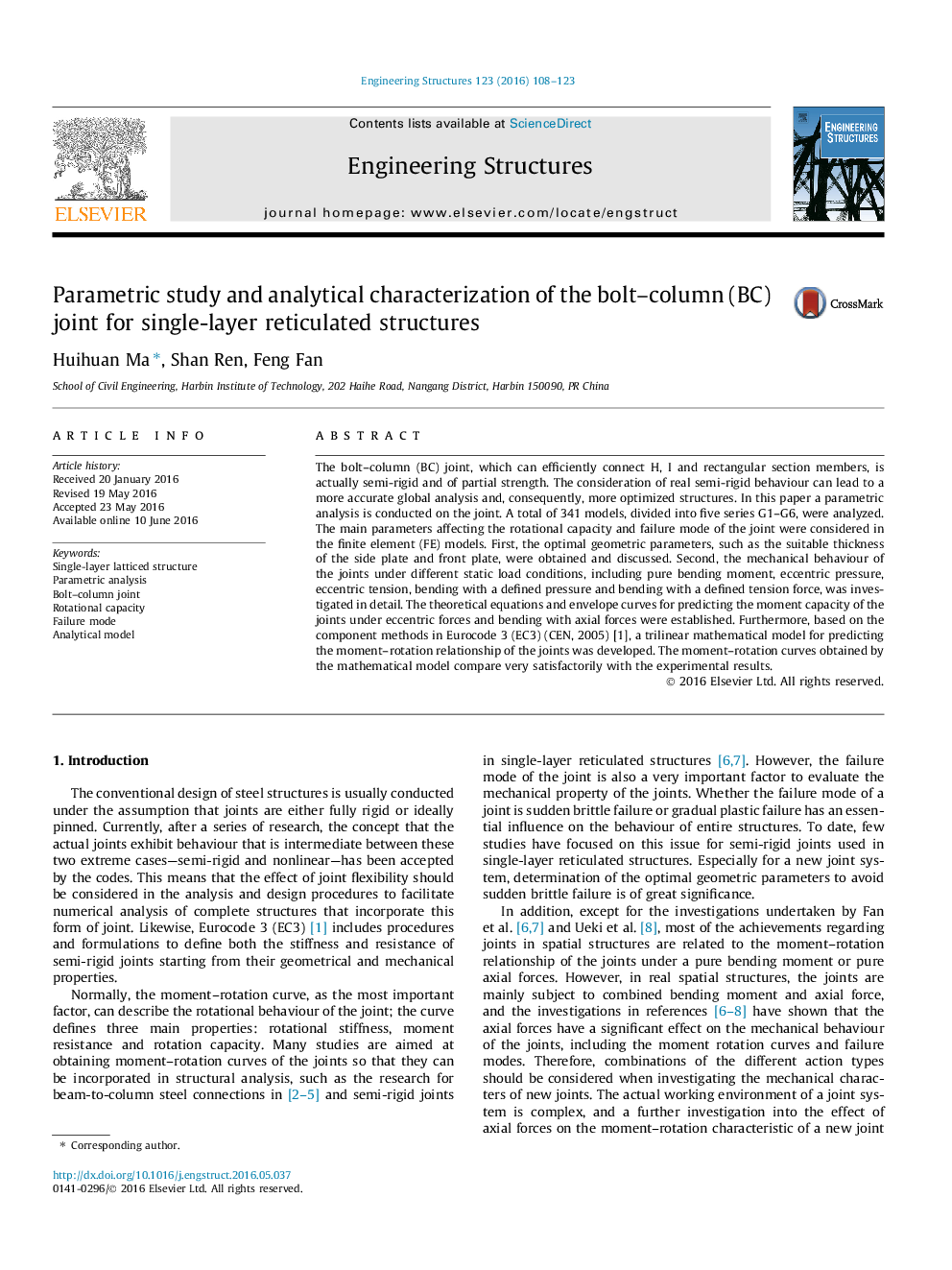| کد مقاله | کد نشریه | سال انتشار | مقاله انگلیسی | نسخه تمام متن |
|---|---|---|---|---|
| 265672 | 504323 | 2016 | 16 صفحه PDF | دانلود رایگان |

• 341 models of the BC joints were analyzed and discussed in detail.
• The optimum geometric parameters were obtained and discussed.
• The envelop curves for predicting the plastic moment resistance were established.
• A tri-linear mathematical model for predicting the M–φ curves was developed.
• The proposed analytical model was verified by the experimental results.
The bolt–column (BC) joint, which can efficiently connect H, I and rectangular section members, is actually semi-rigid and of partial strength. The consideration of real semi-rigid behaviour can lead to a more accurate global analysis and, consequently, more optimized structures. In this paper a parametric analysis is conducted on the joint. A total of 341 models, divided into five series G1–G6, were analyzed. The main parameters affecting the rotational capacity and failure mode of the joint were considered in the finite element (FE) models. First, the optimal geometric parameters, such as the suitable thickness of the side plate and front plate, were obtained and discussed. Second, the mechanical behaviour of the joints under different static load conditions, including pure bending moment, eccentric pressure, eccentric tension, bending with a defined pressure and bending with a defined tension force, was investigated in detail. The theoretical equations and envelope curves for predicting the moment capacity of the joints under eccentric forces and bending with axial forces were established. Furthermore, based on the component methods in Eurocode 3 (EC3) (CEN, 2005) [1], a trilinear mathematical model for predicting the moment–rotation relationship of the joints was developed. The moment–rotation curves obtained by the mathematical model compare very satisfactorily with the experimental results.
Journal: Engineering Structures - Volume 123, 15 September 2016, Pages 108–123